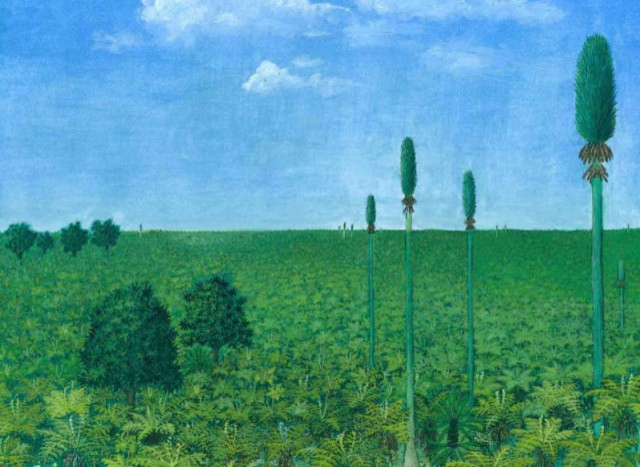300-Million-Year-Old Forest Discovered Under Ashes in China

A 300-million-year-old ancient tropical forest has been unearthed under volcanic ashes in China, according to a new report.
A layer of volcanic ash has helped preserve long-extinct plant species, which has enabled University of Pennsylvania paleobotanist Hermann Pfefferkorn and colleagues to make a reconstruction of the fossilized forest.
The site of the forest is located close to Wuda, in China, where some smaller trees and trunks have been preserved in their entirety.
Pfefferkorn and his colleagues in China, found that the ash landed in optimal locations to preserve the crops.
It's marvelously preserved. We can stand there and find a branch with the leaves attached, and then we find the next branch and the next branch and the next branch. And then we find the stump from the same tree. That's really exciting, said Pfefferkorn.
The scientists were able to examine of 1,000 m2 of the ash layer in three different sites located close to one another. The ash layer was dated to approximately 298 million years ago, falling at the beginning of a geologic period called the Permian.
Pfedderkorn and his colleagues mapped and counted the fossilized plants they encountered, identifying six groups of trees. They found tree ferns formed a lower canopy, while taller trees like the Sigillaria and Cordaites reached 80 feet above the ground.
The group also found a set of extinct tree species called Noeggerathiales. In some sites they found that these species were fairly uncommon, while in others they acted as a dominant tree type.
This is the first such forest reconstruction in Asia for any time interval, it's the first of a peat forest for this time interval and it's the first with Noeggerathiales as a dominant group, Pfefferkorn said.
In the study, Pfefferkorn explains that findings only capture one moment in Earth's history and therefore cannot explain how climate changes affected life on Earth, but he adds that it provides a valuable context.
It's like Pompeii: Pompeii gives us deep insight into Roman culture, but it doesn't say anything about Roman history in and of itself, Pfefferkorn said. But on the other hand, it elucidates the time before and the time after. This finding is similar. It's a time capsule and therefore it allows us now to interpret what happened before or after much better.
The study is published in the Early Edition of the Proceedings of the National Academy of Sciences.
© Copyright IBTimes 2024. All rights reserved.





















